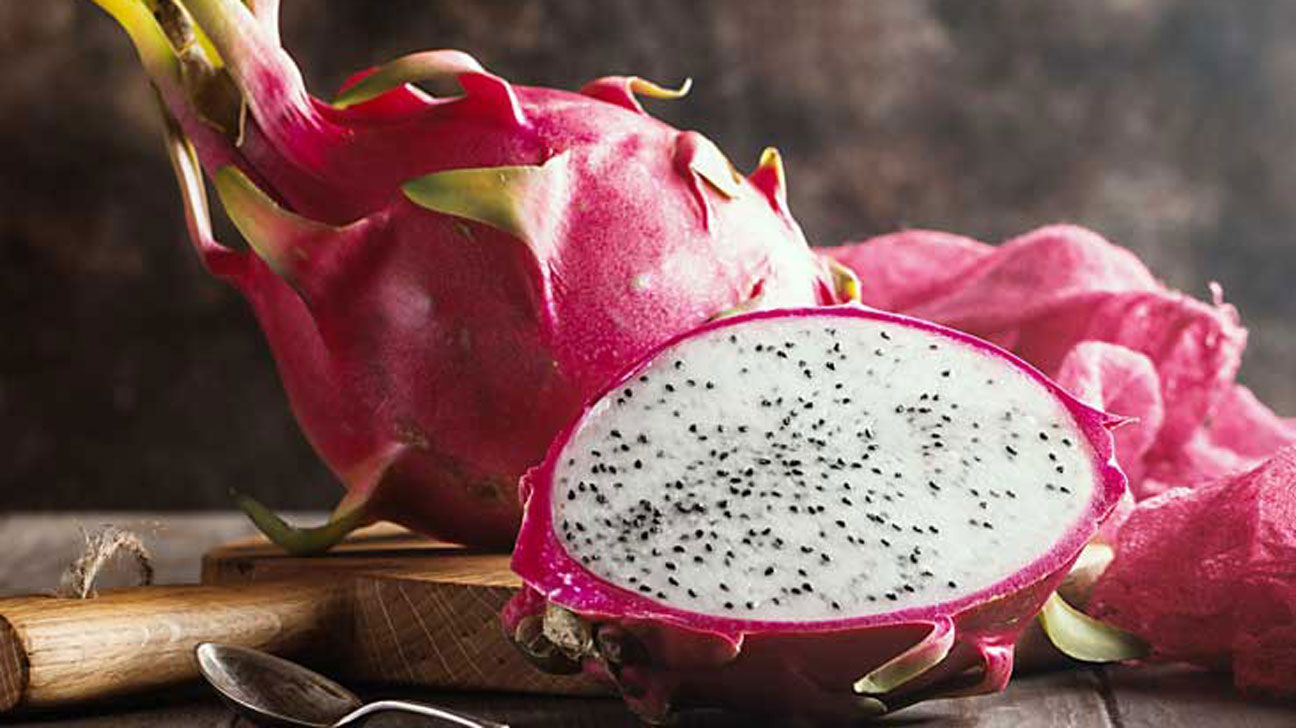Dragon fruit is a tropical fruit that has been cultivated in Southeast Asia, South Asia, and Central America. It is also known as pitaya or strawberry pear.
Dragon fruit is a tropical fruit that has a sweet and sour taste.
The dragon fruit is named after its color, which resembles the scales of a dragon. The skin of the dragon fruit can be red or green, depending on variety. The flesh inside usually has five large seeds that are edible and often sweet tasting.
Dragon fruit is rich in antioxidants and Vitamin C, making it one of the most nutritious fruits. It can be eaten raw or cooked into desserts like pies, cakes, and ice cream.
The plant can grow up to 20 feet tall, with leaves that are often over two feet long. The leaves are green on the outer side and purple on the inner side. The flowers are small, white, and fragrant, appearing at the top of the plant before they bloom into fruits.
What are the Most Popular Types of Dragon Fruit
Dragon fruit is an exotic fruit that is native to Southeast Asia , South Asia, and Central America. It is also known as pitaya, kiwano, and strawberry pear. It belongs to the family of Cactaceae and is scientifically known as “Hylocereus undatus”. It has been used in traditional medicine to treat a variety of health conditions including asthma, diabetes, and cancer.
It’s been around for centuries and was even eaten by the Aztecs. The most interesting thing about dragon fruit is that it’s sweeter than apples and oranges.
You can eat them at any time of the day, but they’re best when they’re chilled or frozen. You can also make dragon fruit smoothies with them!
There are three types of dragon fruit:
- the red type,
- the yellow type,
- and the white type.
The red variety is the most popular in Southeast Asia because it is more sour and sweet flavor that resembles strawberries, has a coarser texture.
The yellow type is more sour and has a flavor that resembles pineapple. Dragon fruit is rich in antioxidants and contains beta-carotene, vitamin C, B vitamins, potassium, calcium, phosphorous , and magnesium.
And the white variety has a sweet taste with a smooth texture.
It is high in fiber, contains no cholesterol, and is low in calories.
Interesting facts about dragon fruit
So, there are some interesting facts about dragon fruit:
- According to Eastern legend, the dragon fruit originates from battles with dragons (the reference to the dragon in the name makes more sense now). When the beast could no longer produce flames, the dragon fruit was said to fly out of its mouth. It was said to be placed in the depths of the dragon’s body, where the flesh was tasty. The fondness for the fruit led to all the dragons being slaughtered.
All these are legends, of course… But very interesting, in our opinion! - The taste of dragon fruit is somewhat inferior to its appearance: unsaturated, slightly sweet and watery.
- One of the health benefits of Pitahaya is its low calorie content. Its pulp contains only about 50 kcal per 100g. Instead of eating another cake or candy, you can treat yourself to something new and exotic and thus rid your body of extra calories. Due to the lipid content of dragon fruit, it is also often used in diets and on diet days.
- Dragon fruit is often used to prepare alcoholic drinks. It also produces very tasty juices. In Spain, for example, dragon fruit juice is mixed with lemon or lime juice.
- Dragon fruit is very digestible and is good for stomach upsets. It is especially valuable when traveling to an exotic country. Dragon fruit normalises the stomach and intestines and helps to cope with bloating.
- Scientists have also discovered that this exotic fruit has beneficial effects on the cardiovascular and endocrine systems. Dragon fruit is also good for people with diabetes.
- The pitahaya is actually an arboreal cactus. You can see that this cactus plant grows these exotic fruits like a vine and at night, during the flowering period, it starts to bloom with beautiful white flowers.
You may also like:


